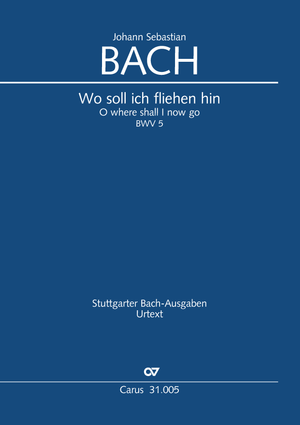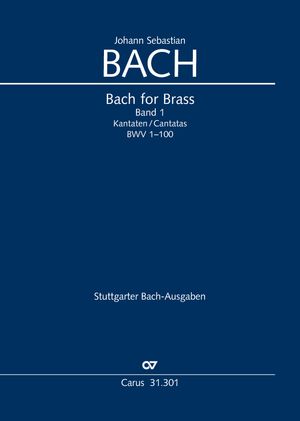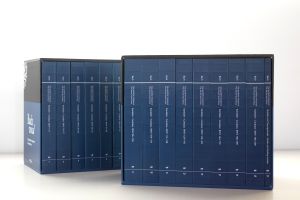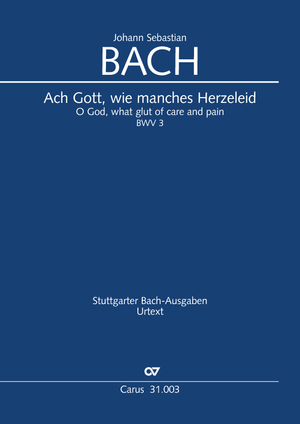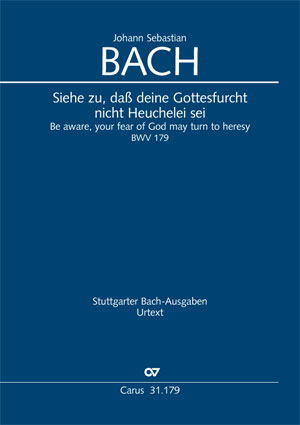Bach composed the chorale cantata Wo soll ich fliehen hin (O where shall I now go), BWV 5, for the 19th Sunday after Trinity in 1724. This work belongs to the 2nd Leipzig year-cycle of chorale cantatas. The opening movement features an instrumental ritornello whose theme is derived from the chorale melody. In addition, there is a notable “scampering” motive of three sixteenth notes followed by a staccato eighth note. The first aria presents a riddle: The tenor is joined by an unfortunately unrecorded obbligato instrument marked with long slurs and many broken chords, but whose identity remains mysterious: Viola? Violoncello piccolo? In the following recitative, the alto voice is joined by the chorale melody played on the oboe. This leads to a bass aria with virtuoso solo trumpet: “Verstumme, Höllenheer, du machst mich nicht verzagt!” (Be silent, hosts of hell!). After a secco recitative, the cantata concludes with a simple chorale movement.
Purchase
Additional product information
-
Composer
Johann Sebastian Bach
| 1685-1750Johann Sebastian Bach is one of the most important composers of Western music history. He came from a widely ramified musical dynasty, which produced numerous musicians and organists in the Thuringian-Saxon area.
Bach vocal
Ever since Carus-Verlag was founded in 1972, publishing the music of Johann Sebastian Bach has been a special focus for us. In the 2017 Reformation anniversary year we completed the Bach vocal project. Bach's complete sacred vocal works are now available in modern Urtext editions, together with performance material. A complete edition of all the full scores is also available in a high quality box set. Personal details
-
Editor
Reinhold Kubik
| 1942
-
Songwriter / Librettist
Johann Heermann
| 1585-1647
-
Continuo realization
Reinhold Kubik
| 1942
-
Translator
Jean Lunn
Frequent questions about this work
 There are no questions and answers available so far or you were unable to find an answer to your specific question about this work? Then click here and send your specific questions to our Customer Services!
There are no questions and answers available so far or you were unable to find an answer to your specific question about this work? Then click here and send your specific questions to our Customer Services!


